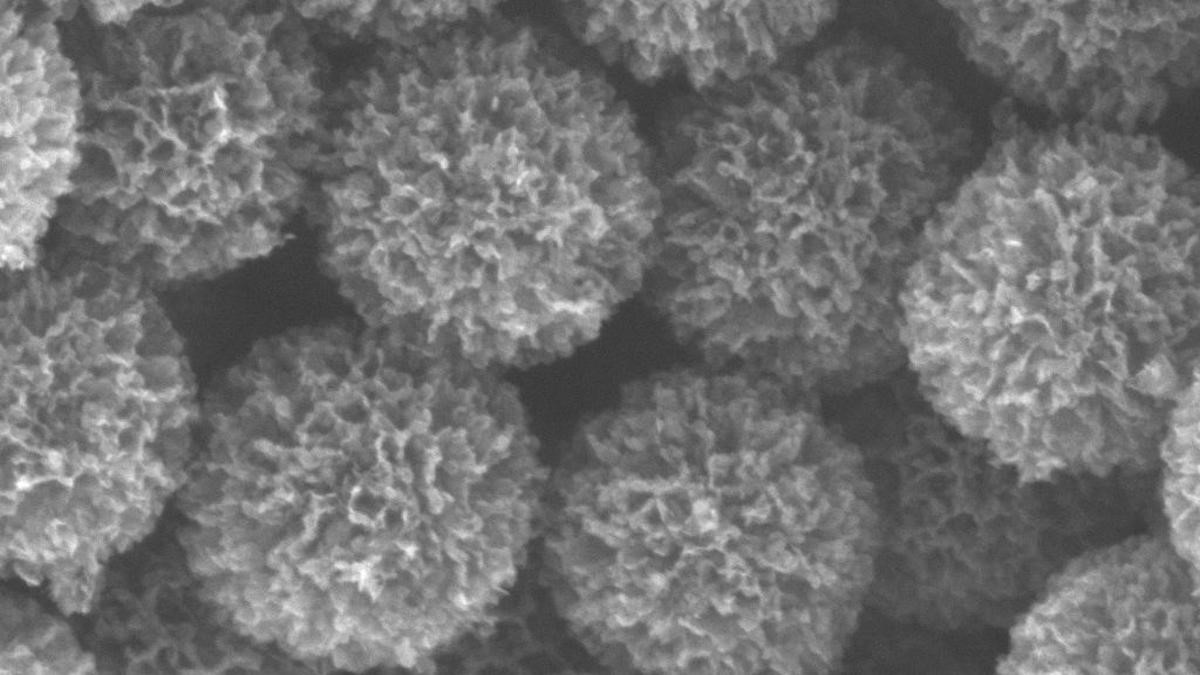Description

Disclaimer: Copyright infringement not intended.
Context
- The research conducted by the IIT Bombay team, led by Ananya Sah and Prof. C. Subramaniam, showcases the exceptional capabilities of carbon nanoflorets, offering a novel and efficient solution for sustainable energy conversion and heating applications.
Details
Synthesis Process
- Silicon dust transformation: Using DFNS (dendritic fibrous nanosilica) heated with acetylene gas to deposit carbon, creating the base for carbon nanoflorets.
- Chemical treatment: Removal of DFNS, leaving behind carbon beads with cone-shaped pits, resulting in the formation of carbon nanoflorets.
Unique Properties
- Unprecedented efficiency: Conversion of sunlight to heat with an impressive 87% efficiency, indicating its superior light-to-heat conversion capabilities.
- Multi-frequency absorption: Ability to absorb sunlight across various frequencies, including infrared, visible light, and ultraviolet, enhancing energy absorption.
- Minimal heat dissipation: Long-range disorder within the structure prevents extensive dissipation of heat, optimizing heat retention for various applications.
Applications and Implications
- Solar-thermal conversion: Potential application for solar-thermal conversion in heating systems, water vaporization, and other thermal applications.
- Commercial viability: Demonstrated capability to generate heat sustainably, making it a promising candidate for eco-friendly heating solutions in various industries.
- Coating versatility: Compatibility with various surfaces, including paper, metal, and terracotta clay, indicating its potential for diverse application scenarios.
Commercialization and Future Prospects
- Patent status: The carbon nanoflorets have been patented, emphasizing the significant commercial potential and market value of this innovative material.
- Research expansion: Ongoing research to explore additional physical and chemical properties, opening up avenues for further applications and advancements in various fields.
- Incubation and scale-up: Initiation of a startup at IIT Bombay for the production and commercialization of carbon nanofloret coatings, signifying a strong commitment to bring this technology to the market.
.jpg)
Introduction to Carbon Nanoflorets
- Carbon nanoflorets (CNFs) are a unique form of carbon nanostructure characterized by their floret-like morphology and exceptional physical properties.
- These structures consist of highly branched, flower-like carbon arrangements, often with a hierarchical architecture, which offer a wide array of potential applications across various fields, including nanotechnology, materials science, and biomedical engineering.
Synthesis Methods of Carbon Nanoflorets
- Chemical Vapor Deposition (CVD): In this method, carbon nanoflorets are synthesized by decomposing hydrocarbon precursors under controlled temperature and pressure conditions.
- Template-Assisted Growth: Using templates such as metal or metal oxide nanoparticles, carbon nanoflorets can be grown by deposition of carbon atoms onto these templates, followed by the removal of the template to obtain freestanding CNFs.
- Hydrothermal Synthesis: CNFs can be synthesized using hydrothermal techniques by the controlled growth of carbon structures in the presence of specific catalysts and under specific pressure and temperature conditions.
Structural and Physical Properties of Carbon Nanoflorets
- High Surface Area: Carbon nanoflorets possess a high surface area, providing increased active sites for various applications, including gas storage, catalysis, and energy storage.
- Excellent Mechanical Strength: The unique morphology and structural arrangement of CNFs contribute to their exceptional mechanical strength, making them promising candidates for reinforcement materials in composite structures.
- Electrical Conductivity: The interconnected carbon network within the floret structure enables efficient electron transport, making CNFs suitable for applications in electronics and conductive materials.
- Chemical Stability: Carbon nanoflorets exhibit excellent chemical stability, ensuring their durability and resistance to various harsh chemical environments, making them suitable for applications in corrosive environments.
Applications of Carbon Nanoflorets
- Energy Storage Devices: CNFs show promise in enhancing the performance of supercapacitors and lithium-ion batteries due to their high surface area and electrical conductivity.
- Catalyst Supports: Their high surface area and porous structure make carbon nanoflorets excellent candidates as catalyst supports for various chemical reactions, including hydrogenation, oxidation, and carbon-carbon bond formation.
- Biomedical Applications: CNFs have shown potential in various biomedical applications such as drug delivery, bioimaging, and tissue engineering, owing to their biocompatibility and high surface area for drug loading and targeting.
- Environmental Remediation: The high adsorption capacity of CNFs makes them effective materials for environmental remediation applications, including water purification and air filtration for the removal of pollutants and toxins.
Conclusion
Carbon nanoflorets represent a promising class of carbon nanostructures with remarkable properties and diverse potential applications across various fields. With continued research and development, addressing current challenges and exploring new avenues, CNFs hold the potential to revolutionize numerous technological and industrial sectors, contributing to advancements in energy, healthcare, and environmental sustainability.
|
PRACTICE QUESTION
Q. Discuss the potential applications and significance of carbon nanoflorets in the context of sustainable energy and environmental remediation. Examine their unique properties that contribute to efficient light-to-heat conversion. (250 Words)
|
















